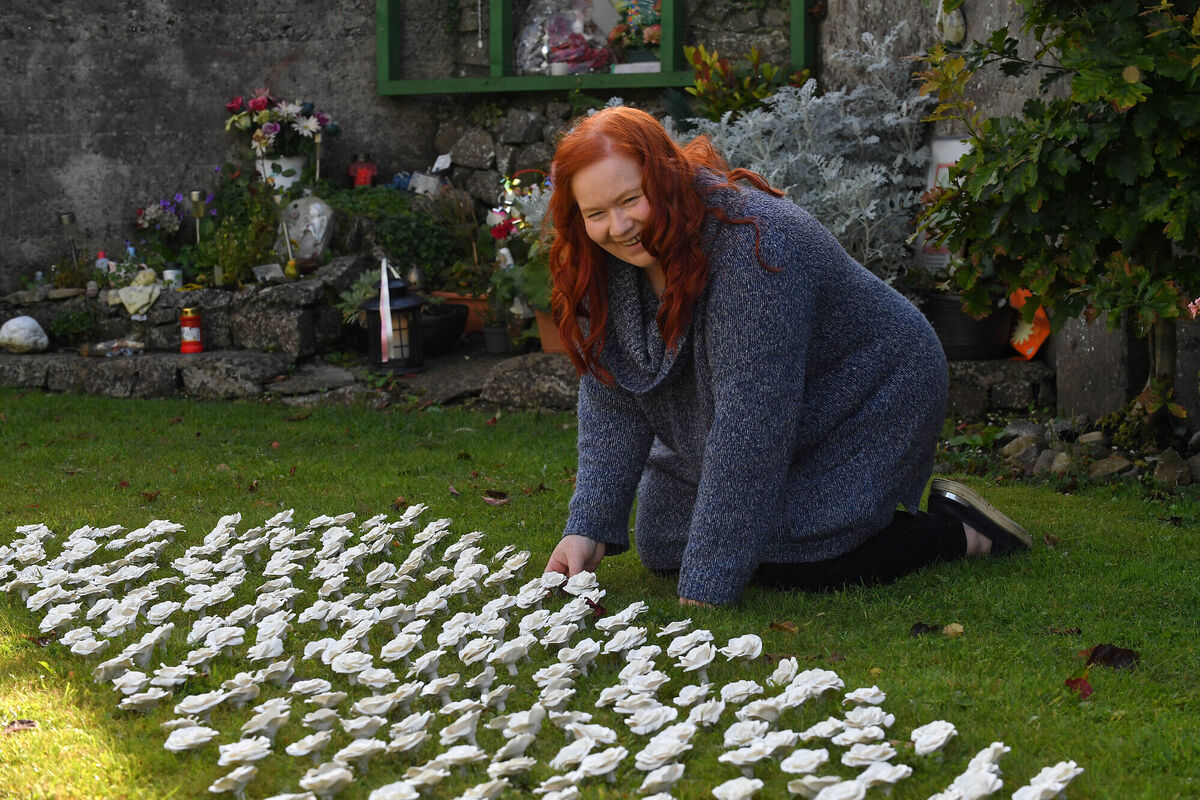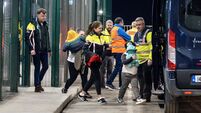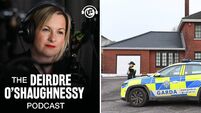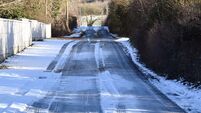'I don't think I will find all the missing children,' says Corkman tasked with Tuam excavation

The man heading up the long-awaited excavation of the burial site of the Tuam babies has said he does not believe it will be possible to find all of the missing children.
Corkman Daniel MacSweeney was appointed by Children's Minister Roderic O’Gorman in May to oversee the authorised excavation and recovery of children’s remains at the site of the former mother and baby institution.
A former delegate with the International Committee of the Red Cross Envoy, he will lead the independent office that will carry out the recovery of the remains of 796 babies.
The Tuam mother and baby home made global headlines in 2014 when local historian Catherine Corless uncovered the names of the 796 babies who are believed to have been buried in a disused cesspit by the nuns. The nuns left Galway in the early 2000s.
For the past nine years, the families of the children and survivors, as well as Catherine Corless herself, have campaigned for an exhumation.

The Institutional Burials Act was finally signed into law last year which allows for the process to recover the remains.
In an interview with the , Mr MacSweeney, who will oversee what will be the country's first-ever exhumation of a children’s mass grave, said he does not expect to identify all the children buried at the Tuam site, but he will do his "absolute best".
Mr MacSweeney explains how he watched the Tuam tragedy unfold while working with the Red Cross in Lebanon and hoped to be involved in the exhumation.
While there is no definite timeline for the recovery of the remains, he promises “full transparency” throughout the process.
And he says the establishment of a DNA bank is one of his top priorities, given the ageing population of relatives.
The Cork native is in regular contact with the families of the Tuam Babies, but only a small number have come forward so far.
“It’s given me plenty of sleepless nights,” said Mr MacSweeney. “But there is a process to this exhumation, and it has been done before all over the world.
“I do not know how long it will take, and the exhumation can’t happen straight away.
“In an ideal world — and ideal is not the right word — but if we have 796 remains, we have 796 close relatives who come forward and give DNA. If we had that situation, we would have a very good chance of identifications. Now, I don’t think we are going to be there. We don’t know until we go in.”
After the story made headlines across the world, the families of former residents called for the grave to be excavated and for DNA tests to be carried out to identify the children’s remains.
The Institutional Burials Act 2022 allows for a director of authorised intervention, including the excavating of land associated with an institution owned, operated, controlled, or funded by a public body.
The law gives “regard to the need to accord dignity to persons buried in that land, recovering human remains [that were] buried in that land in a manifestly inappropriate manner”.
It also includes an identification programme and the establishment of a DNA database by Forensic Science Ireland.
The final part of the process will see the funeral arrangements or memorialisation for the children who will be removed from the septic tank at the Tuam site.
The project will cost more than €12m and the Bons Secours nuns have contributed €2m to the excavation.

“What’s definitely going to happen is, all of the remains will be taken out of the tanks,” he said. “The end point is that they are reburied correctly and appropriately as decided by the families, and we will facilitate a process.”
He also explained that he will be the person to break the news if a child cannot be found.
“The key point is that every step of the way they [the families] will be informed,” he said.
“You have to bring the families with you all the time, bring them to the site once a week, once a month, keeping them updated and informed.

“If we don’t find what we hope to find, then it’s not from a lack of trying. My job is to deliver a process to the highest standards, that gives what it gives.”
For anyone who has followed the story of the Tuam babies, the main question for most is — when will the exhumation begin?
And while Mr MacSweeney understands the urgency to recover the children’s remains, he explained: “It’s not that simple”.
“We start with research,” he said. “We have to look at the archive and data and the Commission of Inquiry, there might be something in that can help with identification and individualisation.
“The second part is what we collect from the families — mostly DNA, basically a swab in your mouth.
“Anti-mortem data, I don’t think it will be relevant here, it’s more for a post-conflict situation where other bits of information may help with identification, like if the person wore a ring, fillings, or tattoos, but because these poor children’s lives were so short, there is none of that.
“Then there is the recovery of the remains. When we recover the remains, we analyse them.
“Then we have these three pots of data, the research data, the family data, you have the forensic data from the site — and then you do what’s called multi-disciplinary reconciliation of all of this, and that can lead to identifications. But we just don’t know until we go in.
“Let’s take 800 children and most of them are very young, a newborn baby has 300 bones, we have 209 as adults, 300 multiplied by 900 is 180,000 bones, and recovering each one of them and documenting each one of them to make sure it doesn’t get lost — that’s a massive job.
“My appointment is for two and a half years. If it requires longer, hopefully it will be given the time. I’m building this from scratch.
“Communication is very important. The Tuam residents are key stakeholders. Research of all the information and archive is a huge amount of work, and questions will arise as we go.
“Managing relations with the families is absolutely key. We need a liaison officer, the head of forensics — hopefully will have appointed someone in the next few weeks.

“Then there is the site team, who will do the dig, then there is a lab, the people who do the examination, and the DNA work will be done by Forensic Science Ireland. I’m answerable to the Oireachtas.”
The independent office will include around 10 people in total, but there will most likely be contractors.
After the collection of research and DNA, as well as securing a lab and offices, the team appointed by Mr MacSweeney will go onto the site in Tuam.
Test excavations of the Tuam site in October 2016 and January 2017 confirmed a “significant quantity of human remains” were found in 18 of the 20 chambers of the septic tank that dated to the Tuam home.
Mr MacSweeney said it is possible that the team who worked on those tests, including archaeologist Dr Niamh McCullough, will be involved in this project.
“I have spoken to Dr McCullough,” he said. “It depends on availability and it’s further down the road.”
He said the process will involve the reopening of the chambers of the tank to remove all of the remains there.
The team, he said, will have to place every piece of the remains into a bag and log it into a system.
They will also examine the entire memorial garden at the Tuam site, as well as the playground at the centre of the Dublin Rd housing estate.
“There is a map there, and we have to see what we find,” said Mr Mac Sweeney. “It’s a huge area, I am hopeful they [the children] are there, we will see what we find, at the end of the process we might look possibly beyond that, but not without consultation.
“The other key stakeholder are the Tuam residents — particularly the people in that estate. I will meet with Galway County Council next week, trying to get a sense of what do people think.”
He also confirmed he has written to the Gardaí and the coroner in Galway.
“If there is any evidence of violent or unnatural deaths, we have to inform the gardaí," he said. "The coroner will be involved, the law allows for that.”
However, the identification process itself will be a “huge task”, he explained.
“A forensic phrase I use is ‘minimum number of individuals’, so if you have a volume of remains, you try and identify which bone is there the most of.
“It could tell you there’s at least 23 there, and that’s a starting point. It gives you an idea of how many children there are.
“While it’s very complicated, this is how the Red Cross and the UN does it — it not exactly the same, but there is a system. While Tuam is unique in terms of the numbers, age, and situation, work with mass graves is not. That happens, so we need people who have experience of this.”
This is why the profile for the head of forensics is “very specific”, said Mr MacSweeny, who will “go outside of Ireland if we have to".
“There are people in Ireland who are able to do this work too,” he added.
He said he is “very honoured” to be in this role, and while he tried not to personalise the story with survivors and families, he couldn’t help but view it as “a complete tragedy”.
The families of the Tuam Babies have already met with Mr MacSweeney.
Annette McKay told the : “He is very realistic, and he wants openness and transparency, I just hope he gets the space to do the work that he wants.
We know this is a massive job, it will take years.”











